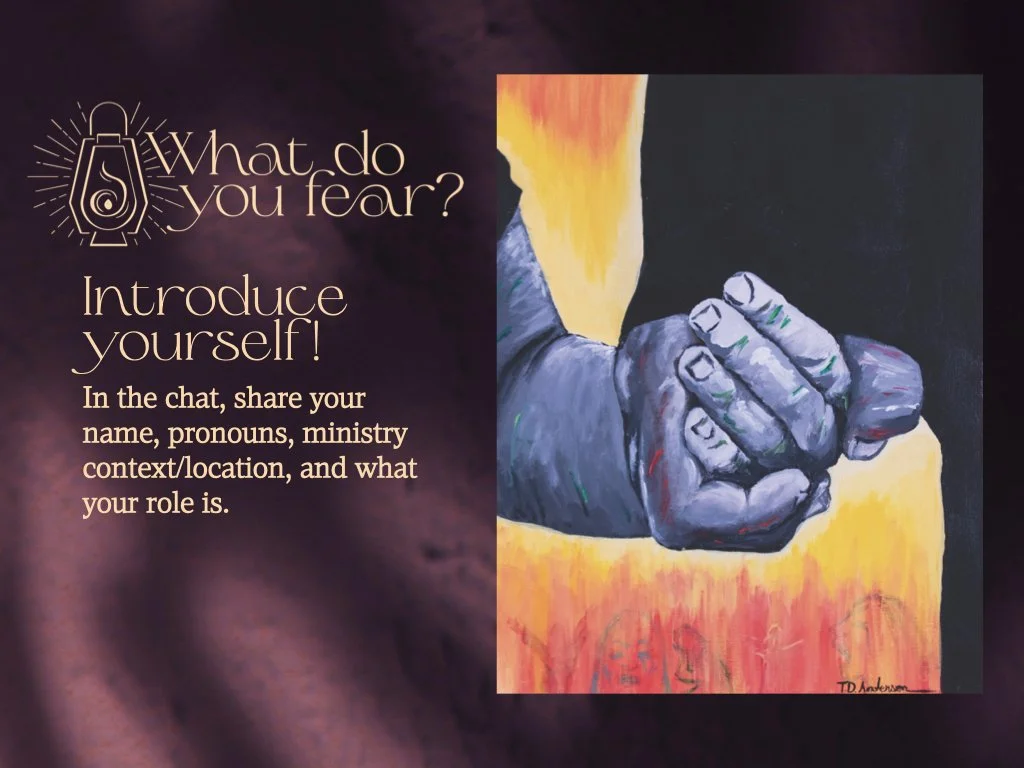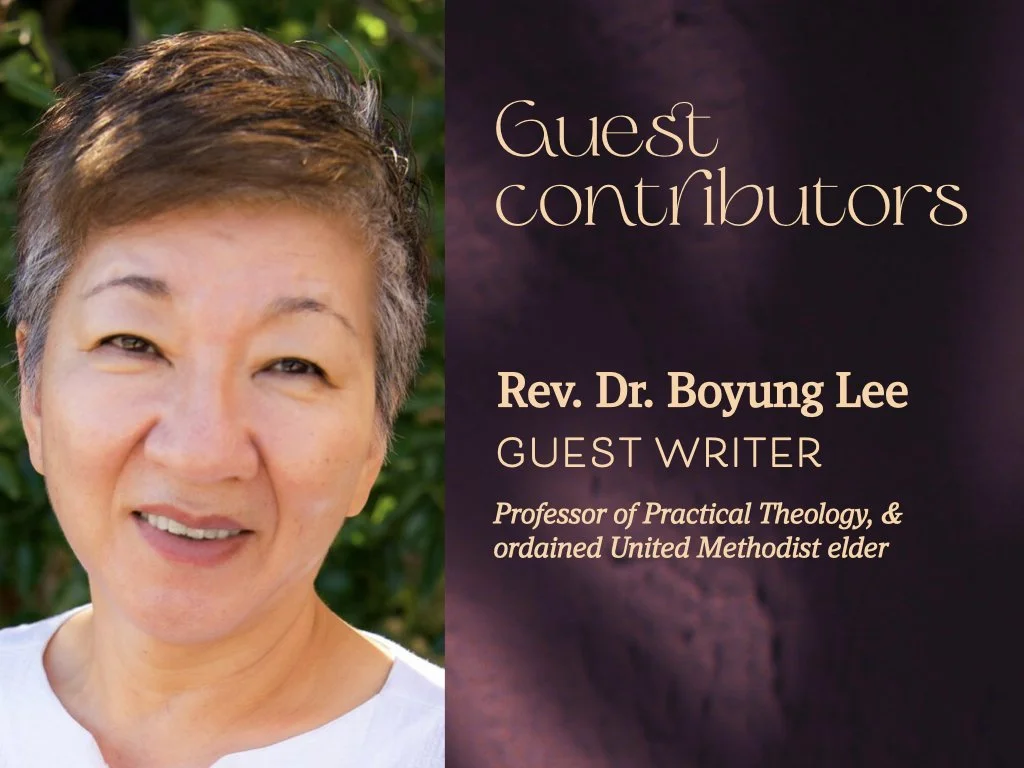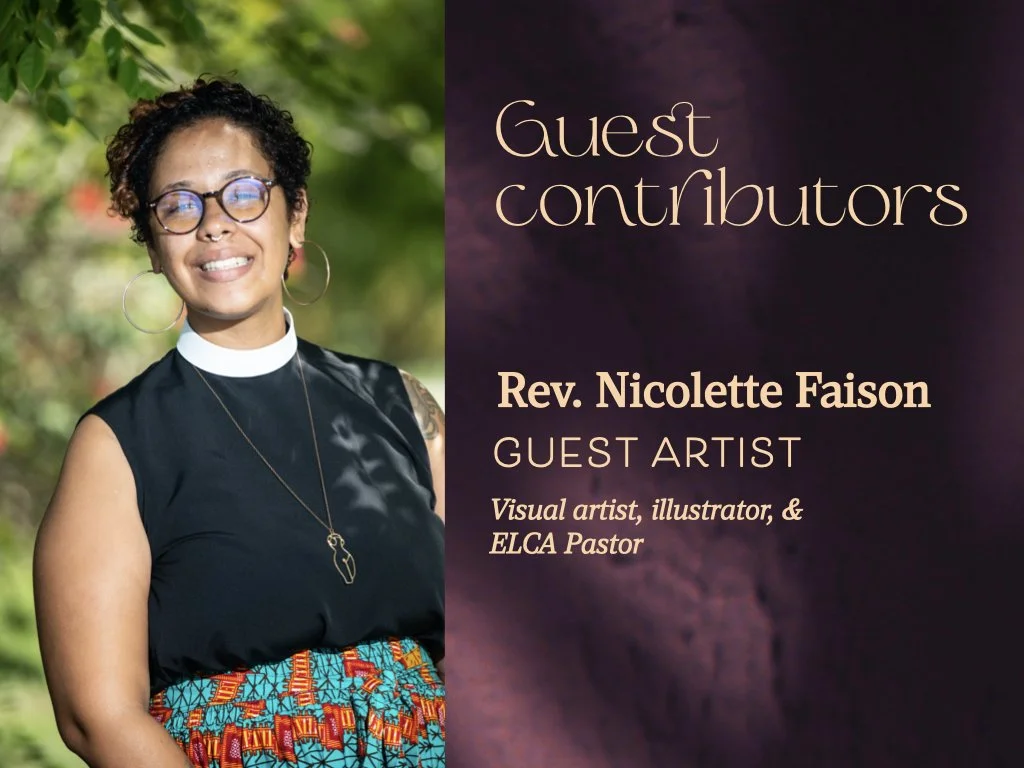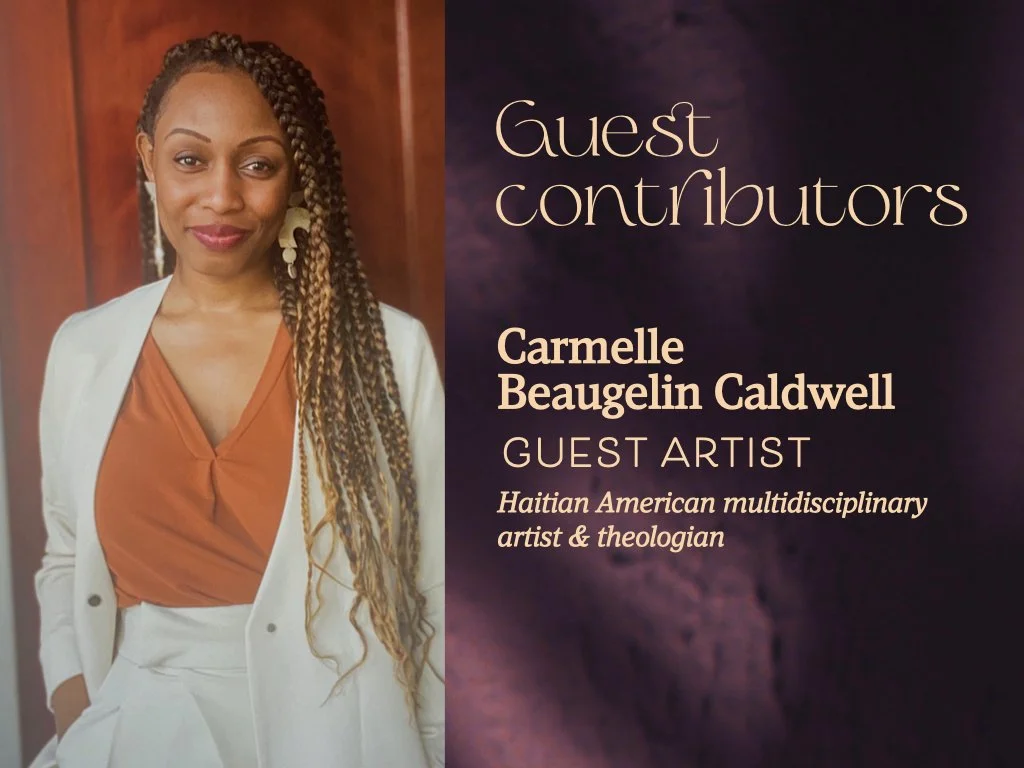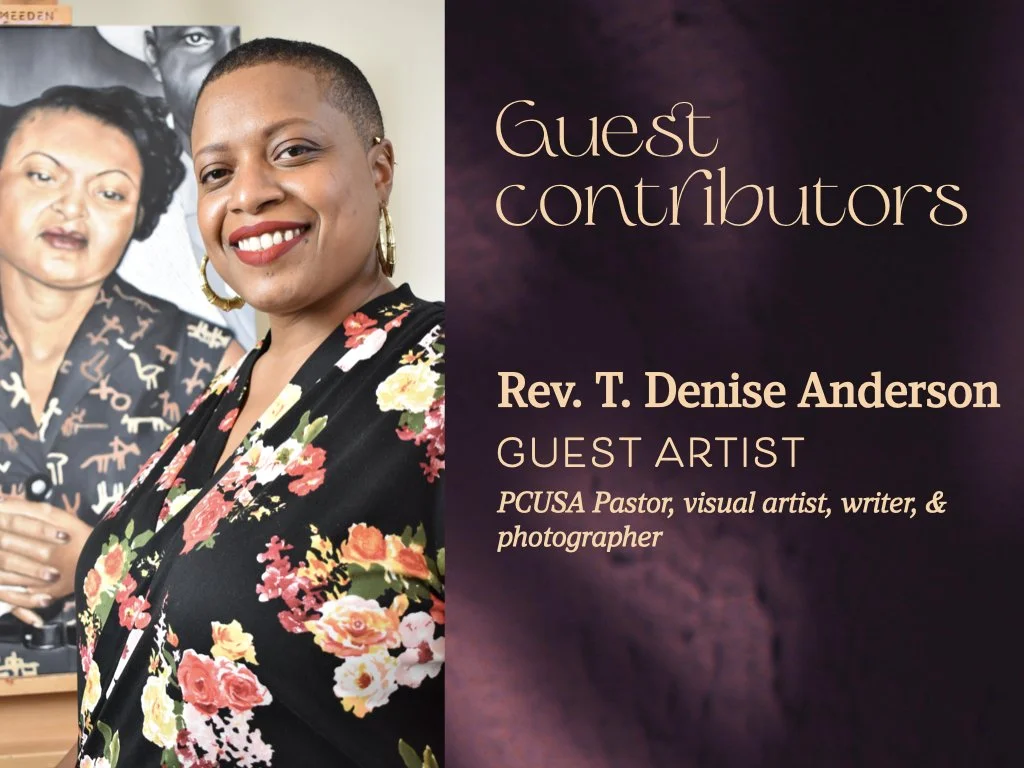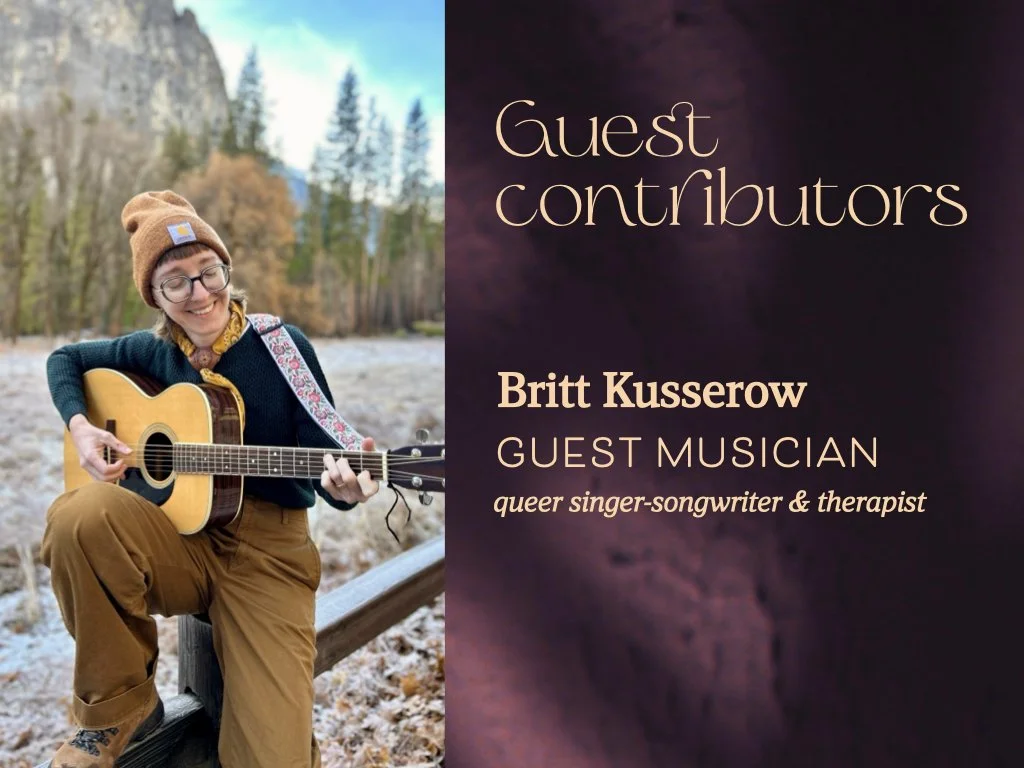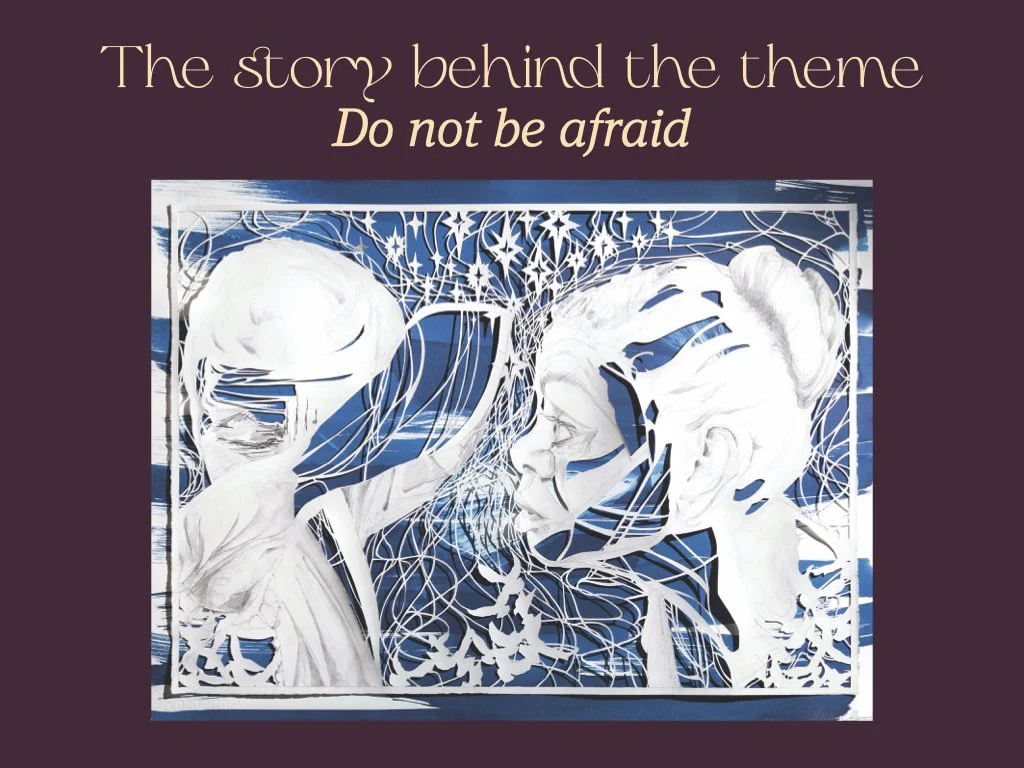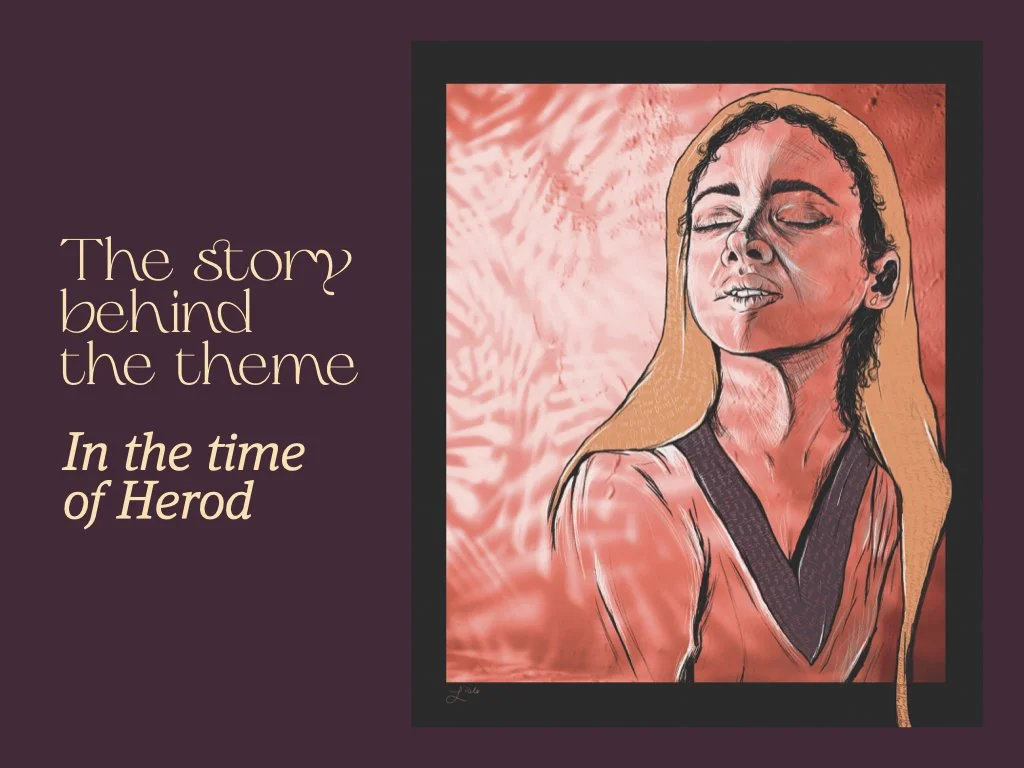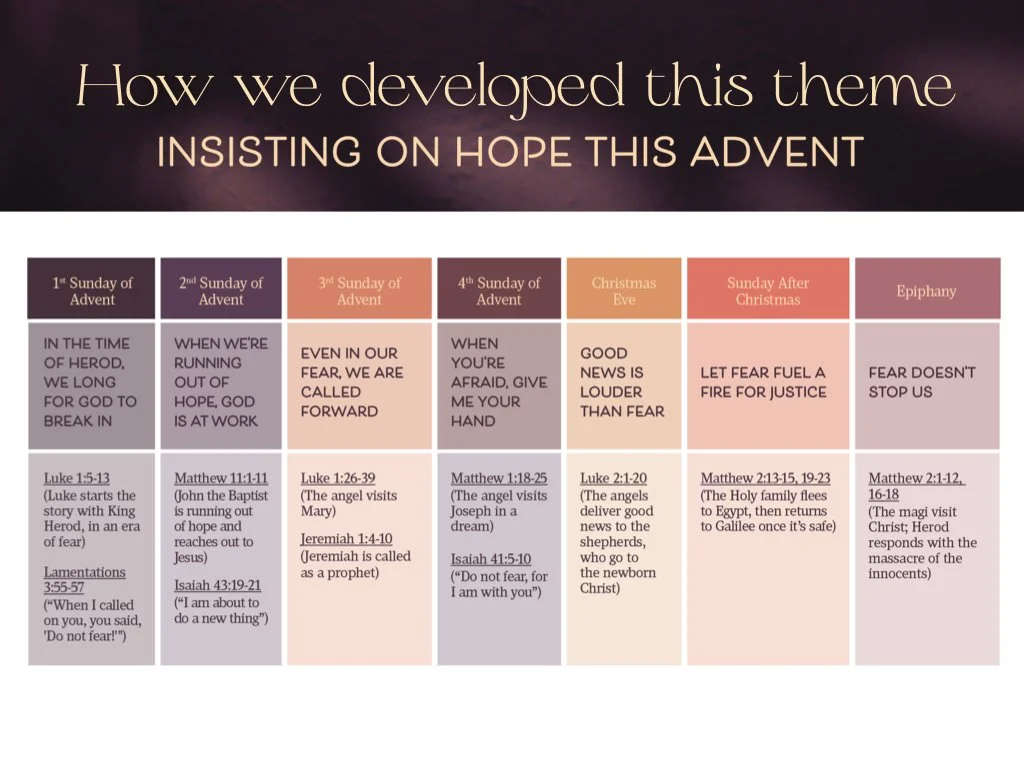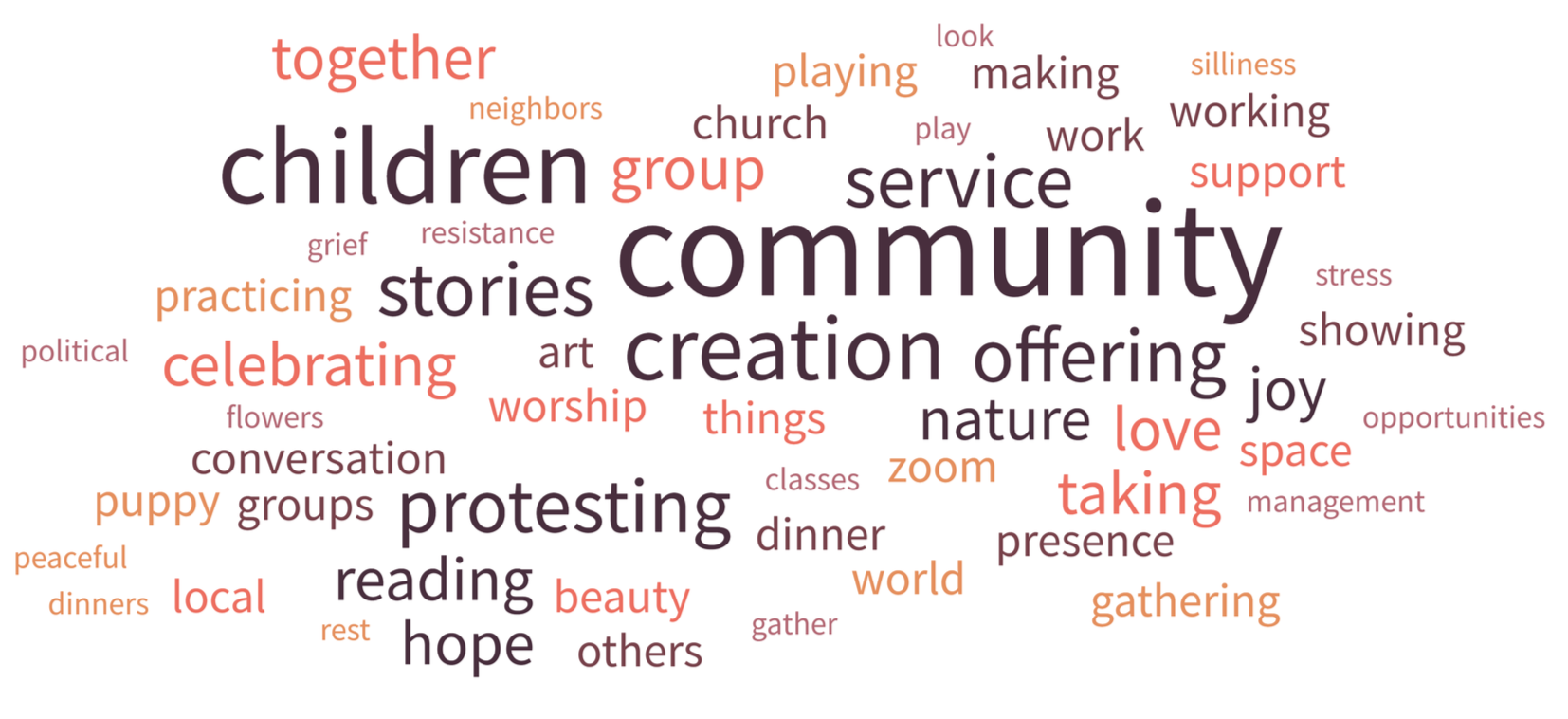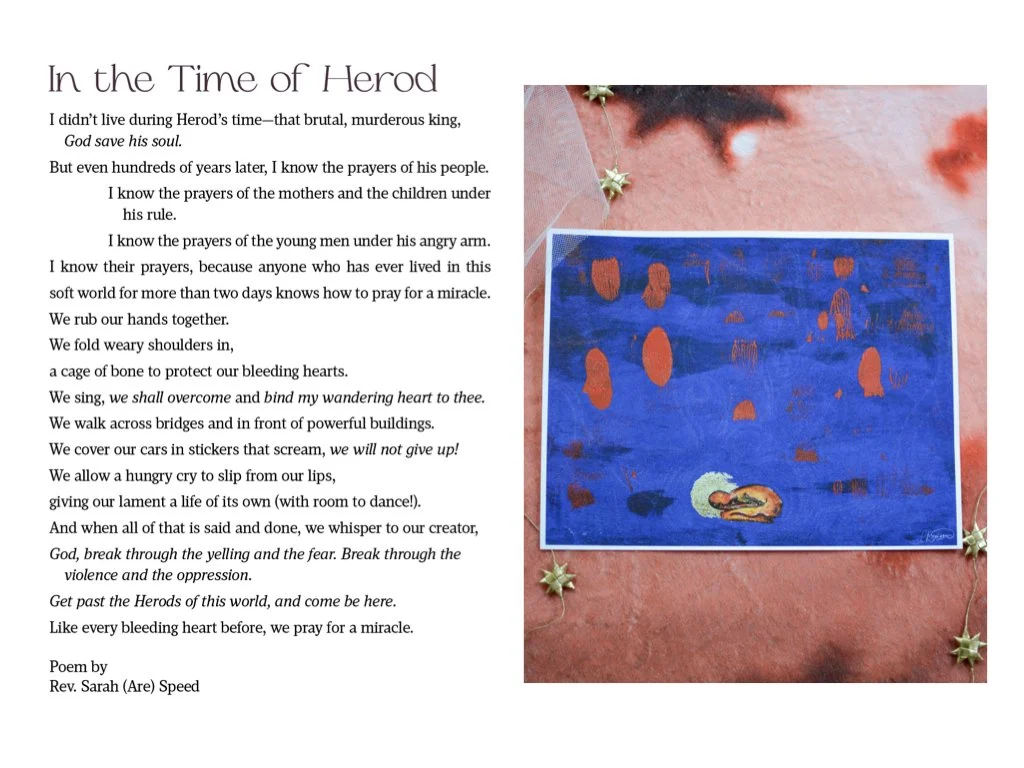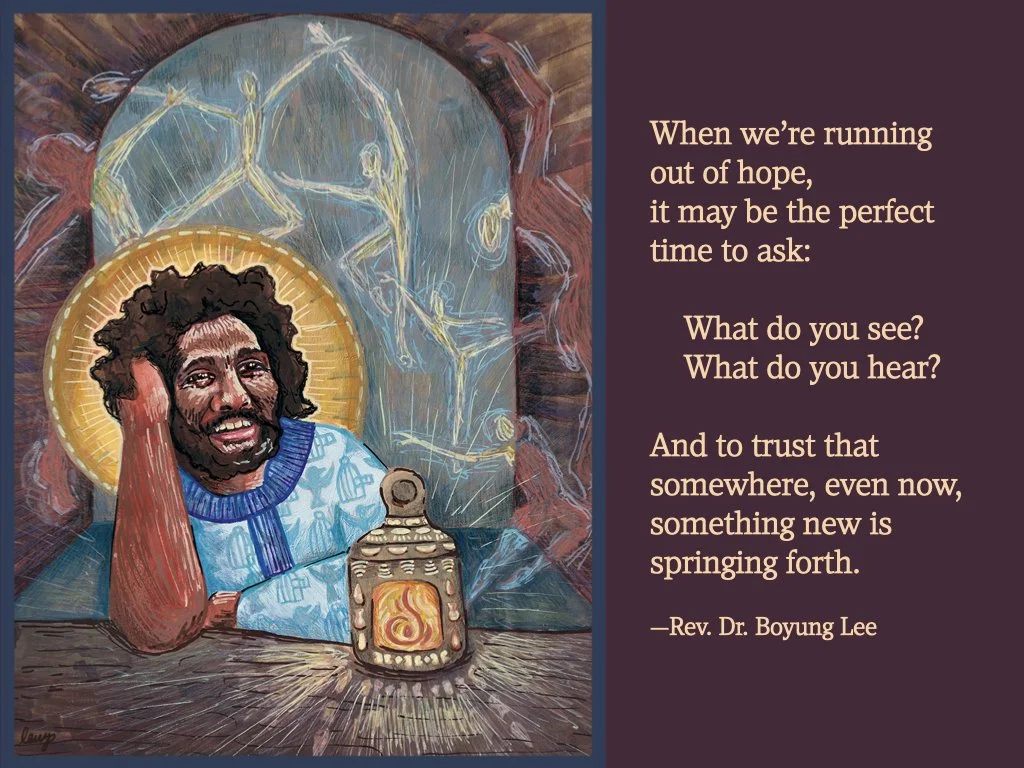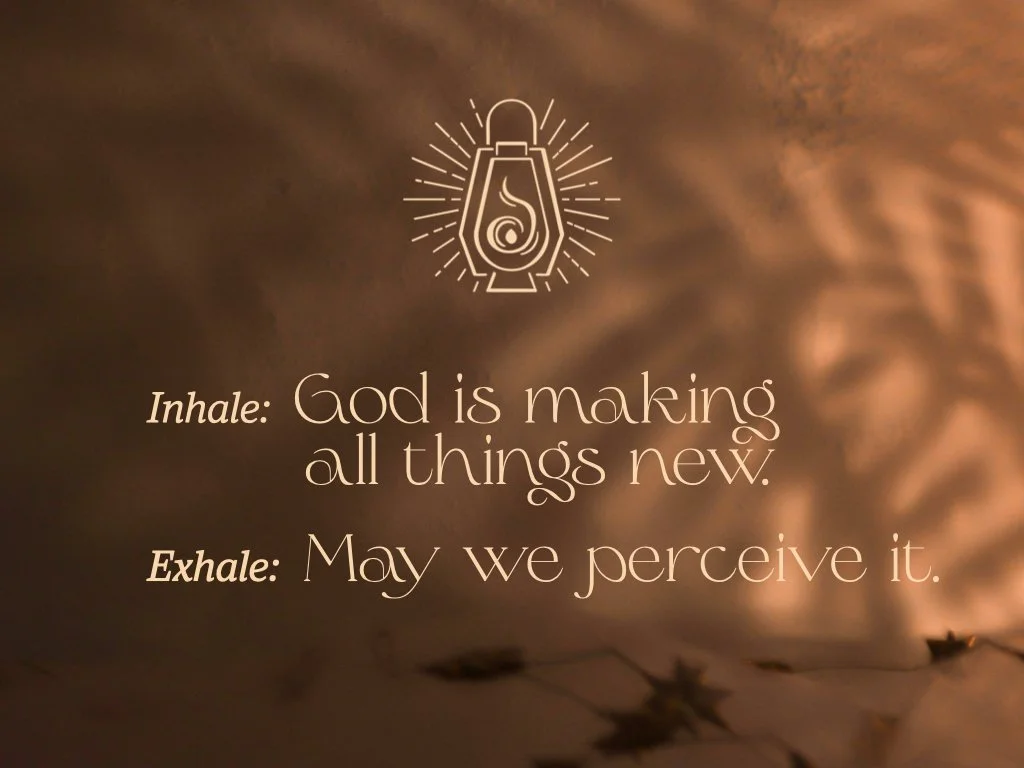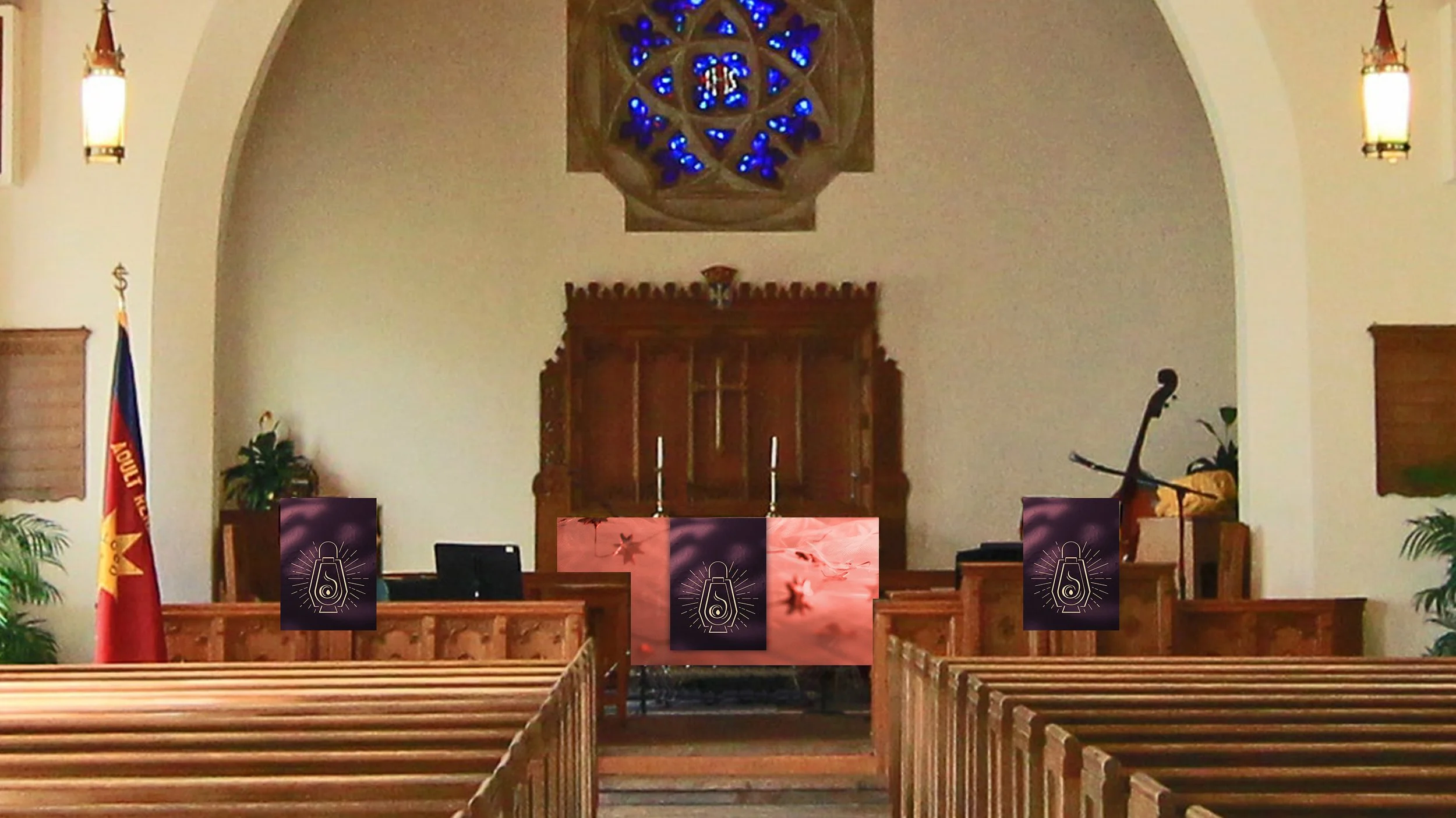What do you fear? A Planning Webinar for Advent (Recording & Summary)
On October 22, 2025, we hosted an Advent Planning Webinar for anyone using (or interesting in using) our Advent series, What do you fear? Insisting on hope this Advent. In this time, we dove into our theme and why we created this series. We shared some tips about how to use the materials, and talked through ideas for implementation. Below is the recording. We hope this can be helpful to you as you plan and prepare.
We’ve also summarized much of the conversation that occurred in the chat. We are amazed by and grateful for the wealth of knowledge and inspiration within the larger Sanctified Art community. Be sure to read through the Q/A’s and crowdsourcing ideas at the bottom of this page.
In the webinar, we shared a Quick Links PDF with links to all the resources and materials discussed. If that document might be helpful to you, you can download it here:
an outline of the webinar recording:
00:00:00—00:11:48 Welcome and introductions
Welcome and introductions from the Sanctified Art creative team alongside participants’ introductions shared in the chat. Introducing all the guest contributors who helped create the What do you fear? resources. An outline of the webinar.
00:11:49—00:24:58 How we developed the “What do you fear?” theme & series
Telling the story behind the way this theme emerged for us and why this theme is ultimately about tenacious hope. Participants share how they are practicing hope (responses summarized below, including a word cloud).
A word cloud featuring the most common words used in response to “What are some tangible ways you are practicing hope right now?” Engaging with community, playing with children, spending time in nature, acts of service, and protesting were all very popular responses.
Some of the ways you’re practicing hope:
“Monthly community dinners for our neighbors”
“Reading stories of hope; being out in creation reminding myself that God has created, is creating and will continue to create”
“I am actively engaging in conversations on Facebook wherein there are people who disagree with me on several levels, but we are doing it respectfully.”
“Working with those who live on the margins, making art together, telling our stories”
“Meditation and mindfulness on a regular basis. It grounds me and keeps me calm.”
“Being with my kids when I’m with my kids and not feeling guilty about it. Celebrating their birthdays and making space for that because it’s why I insist on hope—for them, and for all the children of our world.”
00:24:59—00:41:45 Experiencing the resources
A short segment in which we share art, poetry, commentary, and a breath prayer from the series. Participants respond to reflection prompts in the chat, summarized below.
What fears, longings, or laments do you offer up to God?
“I fear that I’m not doing enough for those that are being persecuted.”
“I lament the ecological disaster that we are ignoring for the sake of enriching the wealthy.”
“I fear I am inadequate to lead in this moment.”
“I lament the worsening pain and suffering of so many people.”
“I long for reconciliation with family.”
“I’m overwhelmed by the vast number of people who need help and how little it seems I/we can do.”
“I fear becoming complacent.”
A word cloud featuring the most common words used in response to “What fears, longings, or laments do you offer up to God?” Many people shared their fears for people in their communities and families, particularly immigrants and children, as well as fears of not being or doing enough.
Where do you see glimmers of hope?
“The changing seasons—the leaves that are shedding and continuing to do what trees do, reminding me that nature and life go on despite the politics and hard things life brings.”
“The children who say profound things when I ask them difficult questions.”
“The blossoming of confidence and courage among women who are finding their voices.”
“People rising up and serving together across all divisions and boundaries.”
“In diverse communities.”
“The connections, energy and action within our communities of faith.”
A word cloud featuring the most common words used in response to “Where do you see glimmers of hope?” Connections with other people, the changing seasons, and communities taking action were some of the places our participants saw God at work in the world.
00:41:46—01:12:35 an overview of all the materials
An overview of all the resources in the bundle as well as bonuses and supplements, with comments and ideas for how to use each component. Consider this an “insider’s guide” to all the resources. If you would like to share just this segment with staff, colleagues, or volunteer leaders, below is a link to the overview video:
What you’re saying about the resources…
“We use breath prayers for all ages, in church as well as encouraging the practice at home.”
“I love the sermon planning guide and recommended reading, they just really help me get deeper into the material.”
“The poems are extraordinary and bring me to tears.”
“We are asking to borrow lanterns from congregants so we can add lanterns to the worship space each week, symbolizing light/hope growing in the midst of fear. If we get enough, we’ll turn down the overhead lights a bit each week to heighten the light coming from lanterns.”
1:12:36—1:20:48 crowdsourcing ideas, Q/A, & premiering our theme song
In this final segment, we engaged with the conversation in the chat and responded to the questions in the Q/A box. While you can’t see that discussion in the video recording, we verbalize many of the ideas in the chat, and much of our conversation is summarized in the section below. We concluded by playing our theme song for the series. We invite you to join our Facebook Group to continue to collaborate with other pastors and ministry leaders.
QUESTIONS & Answers:
(Summarized from the chat & discussion)
-
A: The What do you fear? series does not follow any lectionary, though it includes scriptures that appear frequently, such as the annunciation to Mary and Joseph’s dream. We have many Revised Common Lectionary bundles for Advent here.
-
A: The devotional booklet is weekly, with about 4-5 pieces of content to engage with each week. If you’d prefer a daily devotional, our Advent calendars for children and adults contain prompts for December 1-25.
The devotional booklet printing guide contains links to different formats, including an e-version and a single page file. See page 4 of that document for more details.
-
A: Our What do you fear? bundle includes intergenerational art-based curriculum. This curriculum could be used for Sunday school, craft nights, or in Advent take-home kits. There are also a couple of resources in the bundle that work great for scripture study in small groups of adults:
1) The first is our devotional booklet—we strongly suggest you discuss this weekly in small groups! Your format/flow can be adapted to what you need, but you can read the weekly poem to open your time together, then read the focal scriptures for the week and discuss the art and commentary together. Lots of churches like to do visio divina with the art, which is a wonderful option. The devotional includes reflection prompts you could use for conversation prompts.
2) If you have a small group who wants to dig deep into the scriptures and weekly themes, we recommend you use the sermon planning guide. The “Guiding Q’s” section provides lots of questions for discussion on the focal scriptures. You could also pull articles/podcasts/book recommendations from the “Further Reading & Research” section of the guide if participants want to read and digest something beforehand to then discuss together.
-
A: Yes! Check out our free liturgy on the blog.
-
A: We didn’t create a pageant this year, but there's been brainstorming around that in our Facebook group. Check out a list of our community's favorite Christmas books for children here.
-
A: We have a theme song (“Show Up” by Britt Kusserow) that includes sheet music, lyrics, an MP3, and a music video, as well as a collection of hymns for each week in the series. These hymns, written by Rev. Anna Strickland and set to familiar Christmas tunes, are included in the devotional booklet and linked in our music suggestion blog post. Bundle patrons receive the entire collection of hymns as part of the bundle—look for this document linked on the patron access page. While we don’t include slides for projecting the music/lyrics in worship, you are welcome to copy and paste the lyrics into slides. Coordinating slide backgrounds are included in the branding bundle.
-
A: It depends on the number of volunteers and the option you choose. If you have 3-5 volunteers without any experience creating paper lace banners, we estimate about 7 hours of work. Of course, if you have more or fewer volunteers, choose to paint the shapes instead of cut them out, or choose to turn the paper lace banner into a lantern, the amount of time will vary.
-
A: If you order the full bundle, all of the free bonuses and supplements we’ve progressively released are at the bottom of the Patron Access Page. They are also linked at the bottom of the public webpage for the What do you fear? bundle.
-
A: Yes, if you purchased the full What do you fear? bundle, then you will be directed to a Patron Access Page to download all the files/materials you need. You are welcome to share the link and password with the rest of your staff, worship team, or anyone else in your congregation who may need access to the resource files.
-
A: You can find the price for each tier of the bundle (depending on average worship size) along with a description of every resource included and their individual prices (if purchased a la carte) on this page.
Q: Where do we order the paraments & banners for altar display?
A: We have two printed-to-order banners that feature the What do you fear? branding. The small banner is printed on a weather-resistant material and includes grommets. It could be displayed outdoors or indoors. This size might work well as a parament for the pulpit. The table tapestry is printed on a blanket fabric and it is hemmed along the edge. It’s not best for outdoor display, but could be displayed as a cloth for your Communion Table.
Mock-up of an altar display utilizing our custom design print-to-order paraments & banners.
crowdsourced ideas
(Summarized from chat and discussion during this and previous webinars)
-
The devotional we will use with our congregation as a whole, both online and hand delivered to our elderly and housebound members.
As we have an older congregation, I print the devotional as a ledger size booklet (using the large format file). It makes it easier to read.
Will be using it in group study midweek.
We use this in small groups, including online, and in adult classes.
We have used it as our Sunday School time. The devotional is a great way to engage in conversation.
We also printed it in black and white to save money. Then I put the colored art online and shared my screen during the small group meetings.
-
IDEAS SHARED:
I'm inspired to use it with our Contemplative Prayer group.
We have done visio divina with the artwork for adult ed and it has been great.
We used visio divina for our midweek Advent services in place of a sermon or homily.
We did visio divina in worship. We had instrumental music and gave time for people to take in the art. It worked very well in the worship flow.
I've been using the art as part of my sermons for the last few years.
Last Advent, we printed off all the art and framed them for a gallery spread—folks loved both looking at them, seeing what the artists had to say right next to them, and reading the poetry for that week.
I often use the art for children's sermon.
We have taken the art and artists statements with the corresponding scripture and have made prayer stations for them.
In the past, we’ve printed the art on large posters and displayed them in our entryway so they can be experienced as you enter worship.
We print the images with artist reflections as our bulletin.
We've used the art within projection in worship. We've also projected the images on the wall rather than the text of the scripture. It allows people to focus in on the image and ponder its connection.
-
IDEAS SHARED:
During each season, we start each service with different voices reading the poems to ground everyone into the service. They are followed by the prelude music.
I love to use the poems to set the tone of the homily and reintegrate a key phrase as a wrap-up.
We often use the poems in our visio divina sessions.
I begin adult Bible study sessions with the poem for the week as an opening prayer.
-
IDEAS SHARED:
We are asking to borrow lanterns from congregants in hopes to get enough to add lanterns to the worship space each week (symbolizing light/hope growing in the fear) and, if we get enough, turn down the overhead lights a bit each week to heighten the light coming from the lanterns.


